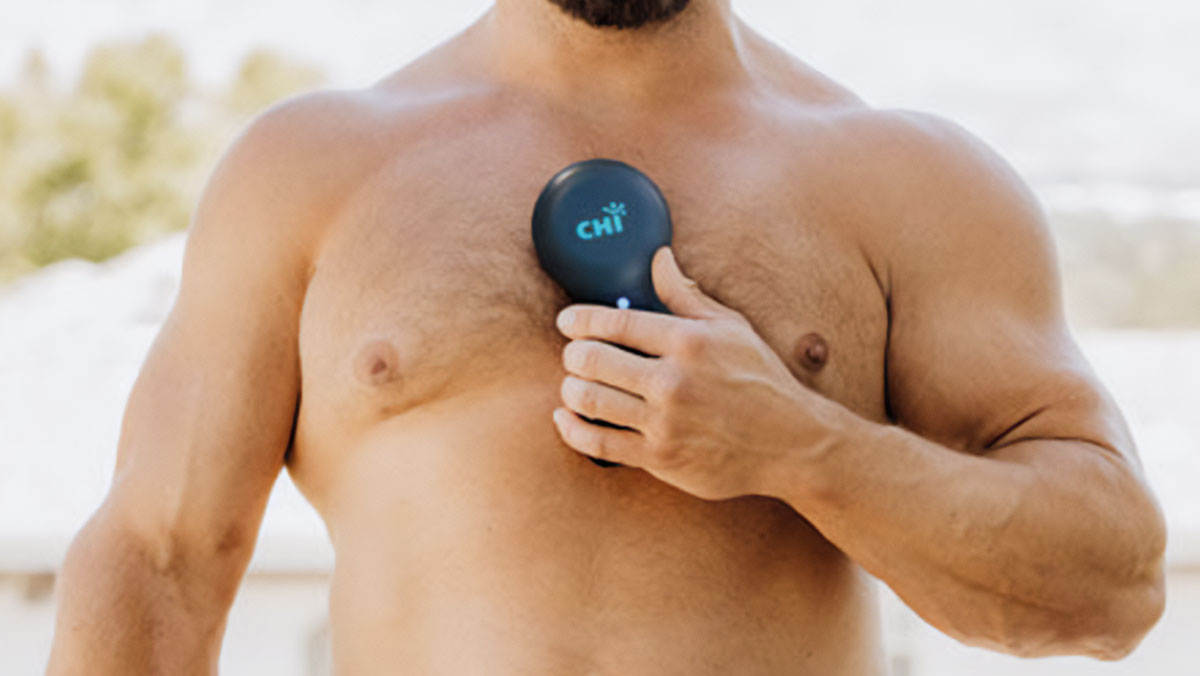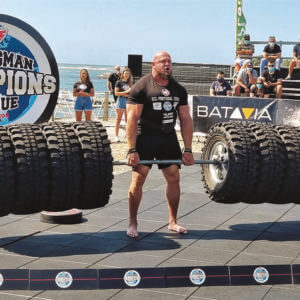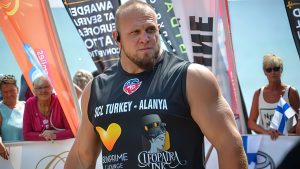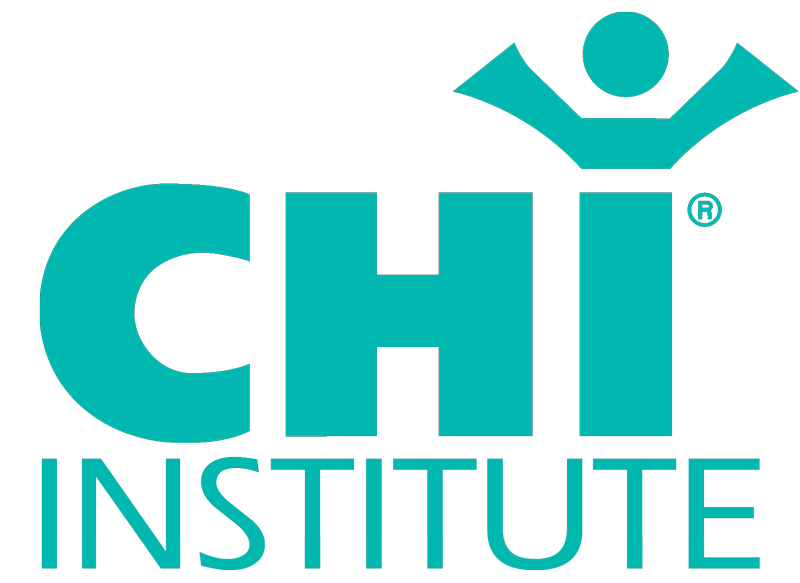
How a World’s Strongest Man Competitor Uses the CHI Palm for a Competitive Edge
Travis Ortmayer knows a thing or two about strength. In 2009, he pulled a jet plane weighing forty-four tons as part of the World’s Strongest Man finals (you can view that here). As a strongman athlete, Travis had grown quite comfortable performing feats you or I would consider superhuman. After eight years at the top of his sport, he was officially declared the fifth strongest person in the world.
Then the unthinkable happened: halfway through the World’s Strongest Man of 2010, Travis broke his ankle. Rather than give his injury the proper time it needed to heal, a lesson in patience that, in his own words, took him “25 years to learn,” he pushed forward stubbornly, limping painfully through contests, developing further injuries, and thoroughly exhausting himself. Though he took fourth place at the Arnold Sports Festival in 2011, his training took a huge hit.
Travis began to resent the very sport he had oriented his life around since he was eleven years old. He was no longer competing for the sake of it, but simply because he needed the money. Pushing himself too hard led to over taxing his nervous system. It was a perfect storm of “hormonal fatigue compounded with injuries compounded with stress at home,” as he puts it.
That’s when the mid-life crisis started setting in. Travis quit training and competing. “I remember there being days where I would look in the mirror and not even recognize the person staring back at me,” he tells me, years later. The results in his personal life were disastrous.
It’s a phenomenon we see very often among professional athletes upon retiring. Their lives fall apart when they no longer find themselves striving for the goal that had been beckoning them over a series of decades. A staggering 78 percent of NFL players end up bankrupt, jobless, or divorced within two years of retirement. [1]
Travis has observed this phenomenon, and he can relate with it. “I was one of those in that boat. You’ve got the rest of your life ahead of you but what do you do with it?” He says it was that “not knowing who was looking back at me” that caused so many problems. “Because if you don’t know yourself, you don’t love yourself, no one else is gonna love you. You know, family and friends start falling away.” Before he knew it, Travis was divorced, financially destitute, living in a storage unit, surviving on fast food, and reselling free curbside objects to make ends meet, with nearly a hundred pounds less muscle on his frame.
Travis fell hard following his rise. But if we take a deeper look, we see that he was undergoing an initiation of sorts. If we incorporate the model of the Hero’s Journey into this storytelling, that ancient pattern discovered and popularized by the great scholar and mythologist Joseph Campbell, we may think of this period as Travis’s personal “dark night of the soul,” the time when he faces the dark forces of his unconscious and must master them in order to realize his true self, extracting wisdom from his suffering in order to serve his community.
To pull off such a feat would require a different kind of strength than any he had summoned during his years of strongman training, and from a reservoir much deeper within himself. But like any hero whose story is worth telling, that is exactly the strength Travis tapped into when he began his grueling slog back up the mountain from which he fell. It is exactly the strength he conjures today as he attempts the inconceivable—at age 37, eight years after his fall and many years older than most of his competitors, Travis is once again training to become the world’s strongest man.
The even crazier part? He has a decent shot at it.
Everyone loves a good comeback story. It’s wired into our very DNA and reinforced through our cultural ethos. We savor the paradox of a person getting back up after being beaten down. We root for the underdog because we ourselves wish to triumph over our own adversities.
It’s why we get emotional during films like Rocky, Seabiscuit, and Slumdog Millionaire. They inspire us to carry on, even when the chips are down. The unlikely stories of J.K. Rowling, Michael Jordan, and Abraham Lincoln teach us that failure is not only a natural part of being human; it’s oftentimes a prerequisite for real success. Some of the greatest public successes have endured the greatest private failures.
But who are we to imagine such successful destinies for ourselves? It’s all too easy to relegate such stories to the realm of fantasy, reserved for an elite few who are somehow privy to universal laws we are unaware of. It seems unlikely that our own comeback stories might amount to anything so powerful.
 Enter Travis, who believes such destinies belong to everyone, including the most downtrodden among us. While his story could easily be turned into a blockbuster film, he knows that deep down he is like each of us, that we each are immersed in our own Hero’s Journey. His renewed effort to become the world’s strongest man is about much more than claiming the crowning title. He hopes to change the way we view human potential itself, not simply within the world of strongman athletics but across all swaths of society. A 37-year old who should have called it quits years ago, Travis ignores the analysis that he’s too old to be a contender. In doing so, he provides inspiration to those of us who’ve been told we won’t amount to what we dream most deeply for ourselves.
Enter Travis, who believes such destinies belong to everyone, including the most downtrodden among us. While his story could easily be turned into a blockbuster film, he knows that deep down he is like each of us, that we each are immersed in our own Hero’s Journey. His renewed effort to become the world’s strongest man is about much more than claiming the crowning title. He hopes to change the way we view human potential itself, not simply within the world of strongman athletics but across all swaths of society. A 37-year old who should have called it quits years ago, Travis ignores the analysis that he’s too old to be a contender. In doing so, he provides inspiration to those of us who’ve been told we won’t amount to what we dream most deeply for ourselves.
In his own words, “The main difference between now and then is that the goal is the same but with different intention. So, whereas my goal before was, ‘I want to win World’s Strongest Man, I want to win first place at the Arnold, I want to be the best,’ there was nothing beyond that. So, even if I had won those things, I may have ended up that same guy looking in the mirror not knowing who the hell he was afterward. Now, I want to win World’s, I want to win first place at the Arnold, I want to be the best out there, I want to set world records, but I want to do it because I want to prove to all the people who are getting their asses kicked by themselves in life that they can pull themselves out of it, that they can pick themselves up.”
Travis realizes the enormity of the challenge he is up against. In the increasingly competitive world of strongman, the notion of staging a successful comeback is unheard of. He says, “I couldn’t find any examples of people who’ve been able to stage successful comebacks, at least in a solo career sport such as strongman. I guess in boxing, I’ve seen some guys come back, but they usually get creamed. I’ve seen some other strongmen try to make comebacks and the sport has passed them by, and so I was a little worried about that. But I knew at that point, it was just putting one foot in front of the other. It was just kind of the same mindset of how I get through an injury. You just continue to believe, see where you can be, and then just take the little steps to get there.”
Injuries go hand in hand with this sport. It’s arguably unnatural to lift, pull, carry, and throw such astonishing amounts of weight, and to do so thousands of times over decades. The amount of stress this puts on the body cannot be overstated, and surely explains why Travis has had dozens of injuries, some of which have held on for years and prevented him from reaching the crowning title. Besides age, this is another factor against him—the fact that many of his old injuries have kept getting reactivated.
Last year during training, he strained his groin and reactivated an old abdominal hernia. Yet, despite these injuries, Travis set another world record (earlier in his career, he set twelve). On November 12th of 2018, Travis Ortmayer set the world record for the 400 lb. Tombstone carry event at the Strongman Champions League World Finals in Cozumel, Mexico, carrying it 82 meters (you can view that here). He placed fourth in the overall championship. It was a testament to how far he’s come, and what a shot he has at achieving his goal.
Travis has finally learned how to take a step back to take several steps forward. Two weeks after setting the world record, he went in for hernia surgery, knowing fully well it would set him back months in terms of his ability to train. But he also knew it was time to fix this glaring weak point, or else risk reactivating it again months down the road.
This marks a major evolution in his career. Though his body is much older, his mind is also much wiser. What an advantage that is, and Travis recognizes it. “You know, people say all the time, ‘If only I knew then what I know now, then I could really do something with whatever. And the reason they say that is because they’re older and they’re not physically capable of doing what they did back then. I feel like I may be an exception to that. Because I know now but I’m still capable of doing what I did back then, so I’m armed with that knowledge and I feel like I can take that as though I were that kid getting that wisdom at an early age and going full force with it.’”
Travis isn’t your typical strongman. Though he closely resembles the Hulk, he upends the stereotype that such musculature goes hand in hand with unintelligence. In fact, he’s enormously articulate, and this is what most captured the attention of our chief inventor, Richard Lee, when the two began meeting nine months ago. Travis lives right here in Reno, Nevada, where we have our office, so it was practically inevitable that the two would stumble upon each other and begin having discussions regarding injury and athletic recovery.
It was a compelling and admittedly counterintuitive dialogue, for both men have studied injuries on deep levels, but from entirely opposite standpoints, one from the laboratory, the other from the gym. Richard felt strongly that our products might be able to help Travis, who, always the curious student, agreed to experiment with them. After observing that they had real tissue-repairing effects and were able to substantially lower inflammation levels in the body, he was sold. A mutually beneficial partnership was born.

We are honored that Travis has decided to employ the use of our products in his training and competing. He had this to say about the Equitonic 9 a few minutes after setting the world record in the Tombstone carry event in November. Asked what he was applying to his sore muscles, he responded, “The Equitonic. It’s the Infratonic but for horses. I guess I’m a little bit bigger than the average man. But you know what? I’ve been using it all weekend. I just set a world record on the [Tombstone] carry. 82 meters with a 400 lb. stone. I think it’s doing alright. In fact, I have had no cramps this competition, no muscle spasms, no tightness other than the normal wear and tear after an event. But no injuries, no excess fatigue to speak of. I think this thing’s doing the trick. Thank you, Richard.”
Richard caught up with Travis a couple of months later to officially interview him (you can watch that here). Richard asked Travis how the products have been helping him. He responded, “I would say the products are helping me because, well, in my profession, strongman, daily body beatdowns basically, I create a lot of inflammation, a lot of soreness, a lot of damage to the tissue, which is part of the process of rebuilding and making you stronger. I’ve used the Infratonic and the VitalRest mostly to promote blood flow, relief from soreness. I feel it increases my recovery ability, the speed at which my cells heal so that from one workout to the next, I’m recovered, refreshed, and can put in a full force effort to get the most out of that next workout.”
Look for Travis Ortmayer in the headlines. We’re cheering for him, that his determination to win will carry him to success. We hope our support helps him to become stronger and more injury proof in his comeback. But we also want to point out what tremendous success he has already achieved in having picked himself up after falling, and for setting his sights so high when the deck is stacked against him. He has “chosen what should be impossible,” as Richard put it, and gone after it with a fervor that is admirable. We find it very inspiring, one reason we are so excited he has decided to partner with us. We hope his story reaches as many people as possible. Please share it with anyone who you think might benefit.
If you would like to follow Travis’s journey, check him out on his Instagram @travis_ortmayer
Comments (3)
Leave a Reply
You must be logged in to post a comment.


An awesome and inspiring piece and an amazing testimonial to the benefits of the Infratonic & Vital Rest!
Thanks, Amy! We appreciate all of your continued support in both Travis and our journey! 🙂
The phenomenon of professional athletes after retiring and having messy lives seems to occur in other sports. There are some who cannot manage their life and wealth, in the end they are wasted and in their old age they become poor.